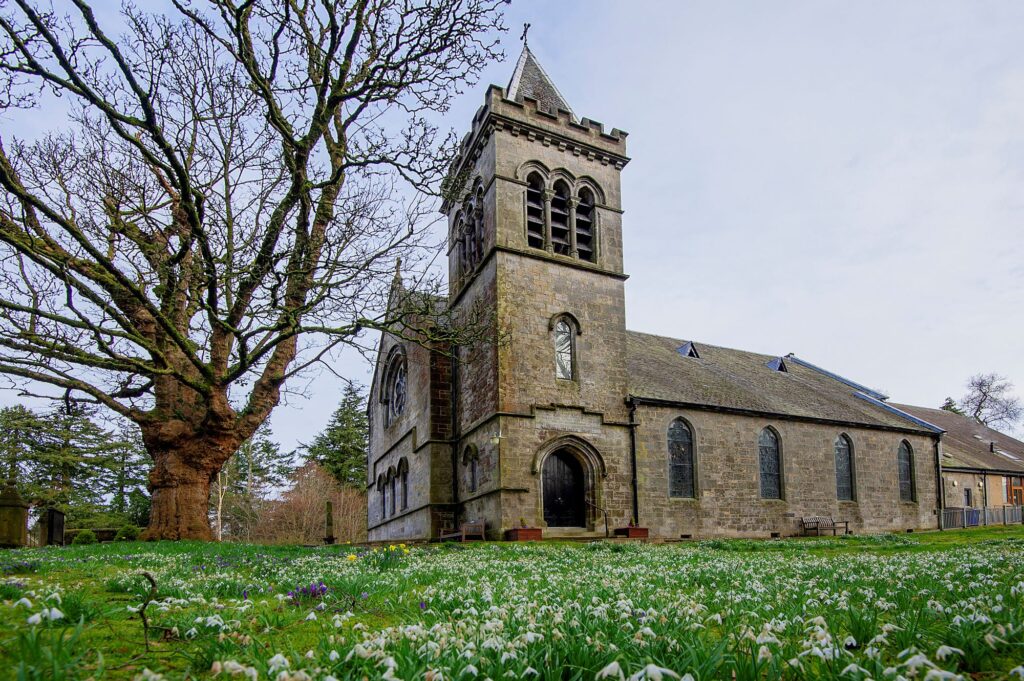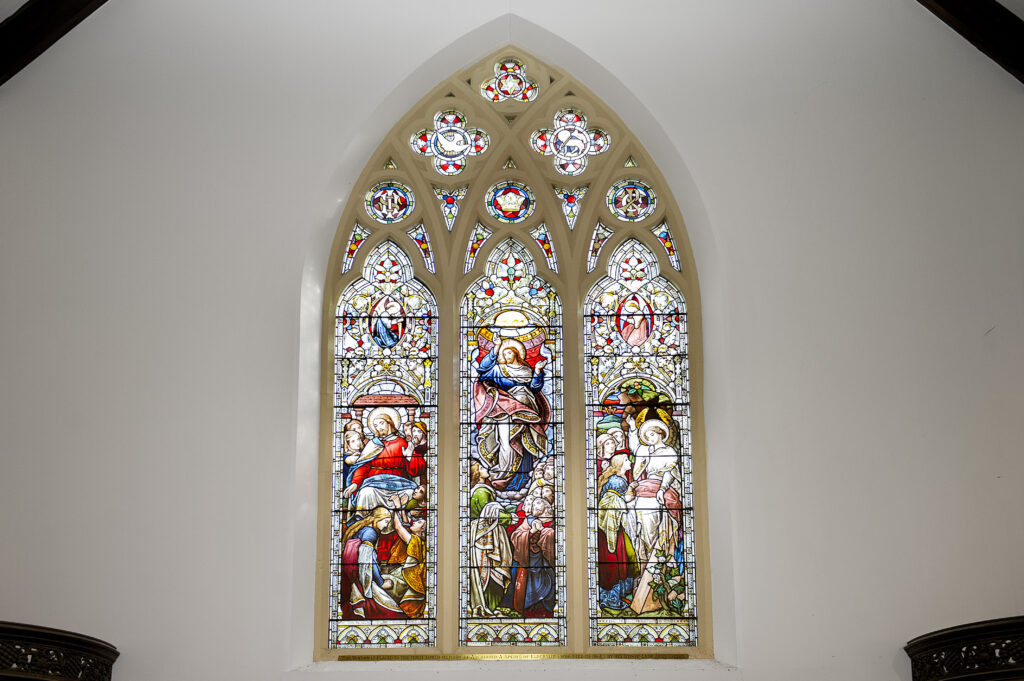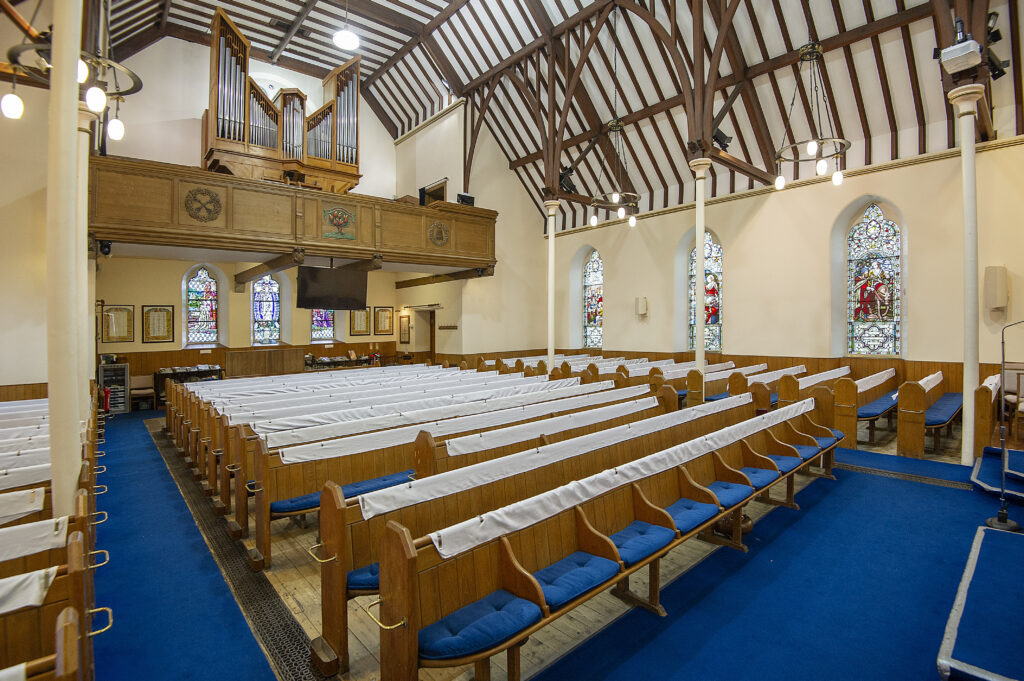history
The Church is the beating heart of our community, and its history and development is indelibly linked to the history of our beautiful village.
Nobody knows exactly when Houston got its first place of worship, or exactly where in the village it was built.
The oldest surviving Church building is the ruined Kirk of Kilallan, which dates back to the 10th or 11th century, when incoming Gaels introduced the cult to the area. This was also one of the churches gifted to Paisley Abbey by Walter the High Steward in 1169. The church bears the date 1635 above the door; this would undoubtedly have been placed there when the church was developed post Reformation. It lies just off Corsliehill Road, about two miles from Houston. The building here fell into disrepair after it was abandoned when the two parishes of Kilallan and Houston united in 1771.
Worship then centred around a fairly modest building which was erected on the site of our present Church in about 1775. While there had been plans to build a bigger Church, the considerable costs involved meant that only galleries were added to the existing building at this time.
Almost 100 years later, in about 1870, Mrs Ellice of Glengarry was given permission by Paisley Presbytery to build a new church, on the present site, in memory of her son, Captain Archibald Alexander Speirs of Elderslie, who had died shortly after being elected as MP for Renfrewshire.

This Church, believed to be the third structure on this site, with earlier buildings dating back to the 8th and 18th centuries, was completed in 1875.
It is designated a Grade B Listed Building by Scottish Heritage and is home to Grade A Listed effigies of Sir Patrick Houstoun and Lady Agnes Campbell, dating from the 15th century.
By the 1930s the Church was badly in need of repairs and, although the responsibility for the work lay with the congregation, the Laird stepped in and agreed to carry out a scheme of restoration, improvements and redecoration. This work was completed in 1938 and included the re-siting of the effigies to the west end of the sanctuary.
Apart from the installation of two new stained glass windows and the re-siting of the organ, the church has remained virtually unchanged up to the present day.
In 2016 a new extension was added to the back of the Church, and named Killellan Halls. It includes meeting rooms, a vestry, kitchen and toilets.
The West Church (now the ‘West Halls’, on Main Street) was built in 1844 at the time of the Disruption, when members of Houston Kirk broke away to form a congregation of the newly constituted Free (later to become the United Free) Church. In March 1941, a fire broke out in the loft of this Church, completely destroying it.
In 1949, it was agreed that the two congregations would unite again, worshipping together in Houston & Killellan Kirk and using the rebuilt ‘West Church’ as hall accommodation. The original part of the West Halls reopened in 1953, and an additional hall was added in 1989.
Houston & Killellan Kirk is part of Clyde Presbytery.
windows
The beautiful stained glass windows in our Class B listed Church are one of the building’s notable features and it is worth taking time to enjoy them.
At the west end, the three windows above the effigies were gifted by John and Mary Gardner, who lived at Woodend, as a memorial to those who fell in the First World War. The windows, depicting our twin saints, Fillan and Peter, were created by renowned Edinburgh artist Douglas Strachan.

Moving clockwise, the four windows in the north wall, and the east window behind the pulpit, are part of the original building and date back to 1875.
Turning to the south wall, we have the St John window, given in 1880 by the Laird, in memory of his great uncle, General Charles Hagart CB.
Next is the St Peter window, which was installed by the congregation in 1975, to mark the centenary of the present building.
The window beside it, dedicated to St Andrew, was given by Mrs Speirs in memory of her late husband Archibald Alexander Speirs, who was the laird of the day. He died in 1958.
The final window is the Sancta Barbara window. It depicts Saint Barbara, the patron saint of those who build churches – hence the little model cradled in her arm. This window was installed by the Laird to mark the 50th anniversary of the opening of Houston & Killellan Church, and also to commemorate his grandmother, Mrs Ellice, who had been responsible for it being built.
KILALLAN BELL
This bell sits in a small alcove to the right of the pulpit and is an important part of our Church’s history.
Originally cast in the 12th or 13th centuries, it was first housed in Kilallan Kirk, founded in the 7th century by Allanus, a disciple of St Mirren.
The inscription on the bell recorded the name of St Fillan, to whom Kilallan Kirk was dedicated.
During the Reformation, the General Assembly of the Church of Scotland decided that all references to saints should be removed from Churches and so the bell was recast in 1618, removing St Fillan’s name.

The upper part of the bell was then inscribed with the words ‘CAROLUS-HOG-ME-FECIT’ 1618 – meaning ‘Charles Hog made me in 1618’. It is thought that Charles Hog was probably the son of George Hog, who cast a bell for Closeburn, Dumfriesshire, in 1604.
The bell was removed and handed to William Fleming, Laird of Barochan, after Kilallan Kirk was abandoned when the parishes of Kilallan and Houston joined together in 1771.
He hung it on a tree at Barochan House, where it was rung to signal the end of each working day on the estate.
Eventually a crack appeared in the bell and in 1844 it was recast for a second time. Charles Hog’s inscription was retained, and a new one – ‘Kilallan Bell – David Burgess – Founder – Glasgow – 1844’, was added on the opposite side.
Owners of Barochan House continued to use the bell until the Second World War, when it was only to be rung in the event of an enemy invasion.
The family of the late Mrs Henderson gave it to Houston & Killellan Kirk in 1998, when Barochan House was being cleared prior to its sale.
The bell and its plaque were unveiled on 24th November, 2002, by Ronald G. Cameron, Senior Elder.
Today it is rung at the two services prior to the outdoor service held among the ruins of the old Kilallan Kirk each summer.

